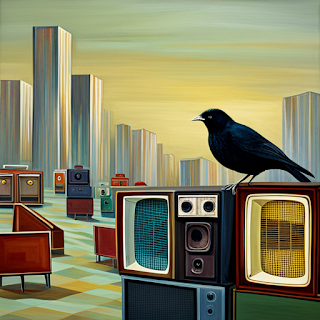Designing a cover
If everything goes according to plan and there are no hiccups, then my novella, The Missionary Dune, will be available as an eBook on the Amazon Kindle store, on Wednesday, 30th June.
I regard it as a success in the sense that it is representative of the kind of story that I want to write. It has been constructed from ideas and concepts that are designed to appear as though they may have some grounding in reality, even though they don't and it's all made up. It is a work of almost pure fiction and imagination, containing only trace elements of research. It goes its own way and doesn't pander to any current literary trends.
A few weeks ago, I designed a cover for the book. I am not even remotely competent as an artist, nor could I afford to engage one; in any case the point of this project is that I do everything myself. To accommodate my low level of artistic talent, the image had to be a photograph; one taken on my ancient digital camera, which was built by the Mayans, circa 400AD, but still functions, as long as you manually hold the door to the battery compartment shut.
I had a vague idea of what I wanted. I ventured into our terrifying loft and brought down a few objects to use as props. I retrieved a chipped tea cup from the back of the cupboard in the morning room. I picked some sprigs of mint that were beginning to emerge from a pair of stone pots, in between the desiccated leaves of the dead daffodils. One night, I wandered down to the beach and filled a plastic washing up bowl with sand. At home, I dried the sand on the stove. The following day, I sieved it to remove any of the larger grains. Mercifully I did not find anything more unsavoury than a few seashell fragments and dried out pieces of seaweed bouncing around on the plastic gauze, after the finer particles had sifted through.
One sunny morning I set it all up in the dining room. I harboured a few doubts over whether I had it it in me to fashion a dune. Actually, if you pour sand very slowly over the lip of a round washing up bowl, it will naturally assume a dune-like formation.
I went on to take over a 100 photos of my diorama, in portrait and landscape form, at various different times of day, from a variety of angles and distances, crouched down, standing on furniture, with the net curtains up or down or pushed to one side to allow more light in. I had a lot of options to go with.
I had been looking at covers on Amazon. Many of them consist of competent pieces of artwork that are pushed into the background by the book title and the name of the author, so that the image doesn't really register unless you make a conscious effort to look at it. From a distance, it becomes a vague and unimaginative colourful abstraction, hidden behind prominent lettering. Line up a few of these covers and they lose all semblance of identity. They are different and yet, uninspiringly, strangely alike.
I was mindful of something that I read in The Stones of Venice by John Ruskin - a principle of architecture: If you are going to have statues high up in the walls of your building, then you need to make them larger than life, so that they appear life-size from the ground. I wanted a cover that was recognisable from a distance, where the elements weren't actively undermining each other.
I mucked around on GIMP for a while. However, in the end, I added my photo image to one of Amazon's cover templates, which separates title, author name and image into separate bands. You can make small modifications, to the colours for example. I would have liked to have centred the author name along the vertical axis, so that it occupied the middle of the black band, however this is a small detail and I can live with it as it is.
The image of sugar scattered over sand is symbolic of one of the characters in the story biting off more than he can chew and doggedly living with the consequences of his actions. If I ever have the wherewithal to go to print on demand (which, as you can read in my previous blog post, has hidden costs) then I have a decent concept for the back cover.
The day after the shoot, the diorama was dismantled. The sieve, the tea cup and the tea tray were thoroughly washed. The mint leaves were plucked from their stalks and made into tea. The sand was returned to the beach from whence it came.
Overall, it went better than I hoped.
I already have the cover concept for the novella that will follow this one. It's ambitious and completely off the wall but doable, I think.




Comments
Post a Comment